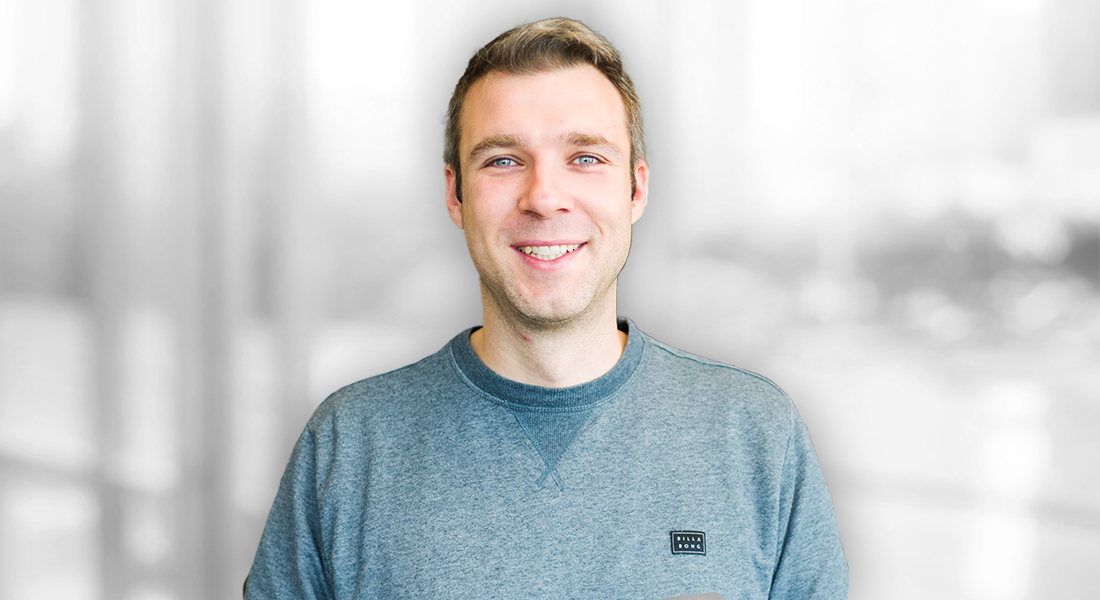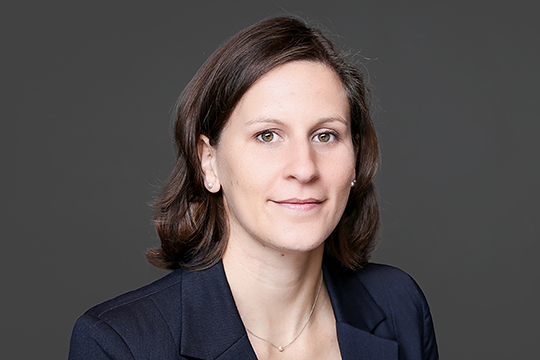Tobias Krüger has been working at Otto Group for more than nine years. This is where he began his career in corporate strategy as a traditional consultant, a “finance and M&A guy.” Effective per 1 October 2016, Alexander Birken, now the CEO, appointed him to be in charge of structuring the “cultural transformation process” for Otto Group. His current position as Head of Cultural Change was created during this process. In his interview with Verena Vinke and Marc Wagner, he speaks frankly about the Otto Group way, the fields of tension within cultural transformation, and why the focus is on variety and diversity in a corporation.
Detecon: Tobias, how would you define your role as Division Manager Cultural Change 4.0?
Tobias Krüger: It is important to keep in mind that Otto Group is not just one company, but a corporate group with 30 major corporate groups. The differences among them pose a challenge. But the greatest of the challenges for us is the advancing digital transformation. We initiated the cultural transformation process so that we would be armed and ready to meet this challenge. An open-end process in which we, the central Cultural Transformation 4.0 team, guide and support the transformation of the individual companies as well as that of the corporate group as a whole. The cultural transformation is carried out at the local level, although under joint responsibility. The organizational units themselves know best what they need. We, the Cultural Transformation 4.0 team, empower, create transparency, and establish interconnectivity.
First of all, we empower the companies to initiate their own change processes. There is no such thing as a “one size fits all” approach. Instead, we want to exploit the variety and diversity of the corporation meaningfully. So in the future every single company will continue to have its very own corporate culture.
Another one of our tasks is to create transparency. We secure the greatest possible transparency throughout all phases of the transformation, including our work with the Management Board. We have a whole toolkit full of communications formats that we can use for this purpose. For instance, there is a monthly vodcast with the CEO, information events, and the mobile communications through our employee app OGtoGO.
At the heart of cultural transformation is a new kind of collaboration; if we are to become more agile, we must cooperate within a network and make decisions more quickly. We need more cooperation within the system, but also seek interconnectivity to the outside in the sense of the platform concept, e.g., with universities and NGOs.
What exactly is different after the transformation in comparison with before? Is there even a before and after at all?
No, there is no before and after. We follow the logic of a tightrope walker. The key point here is the balance between various behavioral patterns or types of cooperation and communication. Together with the organization, we looked at the organization and determined that the way we cooperated with one another meant we were not adequately prepared to take on the challenges of digital transformation. During the cultural transformation process, which has now been going on for three years, we determined in the first step what changes we would have to initiate, what values we wanted to preserve, and how we could create a balance here. Much in the same way a tightrope walker does.
So you carried out a value analysis jointly with employees. How exactly did you do that?
We created our vision, the Purpose of Otto Group, in a participative and open process in collaboration with the colleagues and did not impose it as a decision handed down by a small group on the Management Board. In a far-reaching postcard action and in pop-up stores at the group’s various locations, we asked the colleagues a number of questions, including what they are proud of and what they believe is essential to Otto Group. We analyzed and compiled the answers in an open procedure and published the results on the intranet This enabled us to identify some fields of tension, for instance: “We are actually a Hamburg company at heart, yet we have international aspirations.” All of the following steps were also taken in full view of the corporate public, but everyone was free to contribute to the process and participate in the workshops. At the end of this “journey of exploration,” we had created a common vision in which the majority of our colleagues can find themselves and answer for themselves the question why the Otto Group will still be with us in 20 years.
This means that the entire Otto Group was de facto integrated into every phase of change?
That’s right. This was one of the fundamental principles in the cultural transformation. Together, and over the course of several months, we arrived at our Purpose – Together we push for limits – and our Vision – Together we set standards. This vision points out to us our path into the digital future.
How do you succeed in making the new self-understanding come to life? How do you structure the transfer process?
Our common communicative anchor and orientation is our joint vision. The so-called LKWs – the local cultural transformation teams – structure the transfer process within the individual organizational units. In addition, there are supportive activities such as workshop formats in which individual teams could explore what transformation means for them. As I said above: there is no such thing as THE cultural transformation. The companies determine the structure within their own local contexts. At EOS, for instance, it is called the Cultural Journey while at the holding the team calls itself Wir@Holding. If my team and I were to synchronize everything, we would be nothing more than a bottleneck. We lean more in the direction of believing that there is power in decentralization, that what is needed must be determined within the local context. The focus is a little different from one place to the next, and that is absolutely the way it should be.
Everything that you have described also implies a radical transformation for managers and management culture. How did you deal with that, and what did you do to take the managers along on the journey?
Dr. Peter GröschkeWas genau ist nach dem Wandel anders als vorher? Gibt es überhaupt ein Vorher und ein Nachher?
A basic requirement for a successful transformation is the legitimation from “above.” Cultural transformation is a matter close to the hearts of the Otto family. They take a stand in support of sustained realization of the transformation, do their part as owners to create the right general conditions, and serve as sponsors for the transformation as a whole. Cultural transformation cannot be ordered; it must be practiced – by the managers above all. Accordingly, the Management Board began the transformation with itself. Since the beginning of the process, the Management Board has met once a month for a workshop on the topic of cultural transformation. Moreover, we drive topics close to our hearts and special initiatives in interdisciplinary working groups across all hierarchical boundaries, so-called workstreams. We experience today an even distribution of engagement – independent of gender, origin, seniority in the company, hierarchy, etc. What is more, it is striking that we see comparatively little activity at the level of middle management, which contrasts with what is going on at the level of top or upper management. So what did the Management Board do? It invited this group to come together and asked what they needed to become more active. It was not: “Why aren’t you people doing this? I demand that you become more active, etc.” Instead, the message was this: “I have observed something. I want to tell you what I have noticed. And now I ask what you need to do something about this.”
Let’s talk about figures for a moment. I read about the losses of the holding in an interview and that you had recommended staying calm instead of starting up a thousand other strategic projects in addition to the topic of cultural transformation. We have now arrived in 2019. Do you find any expression of the transformation in figures?
From the very beginning, we have always said: We don’t know where cultural transformation will take us. So we are not going to make any budget projections. Even though we will clearly have to invest a lot of money. And we deliberately did not set any time schedules for the entire corporate group. On the other hand, we introduced elements for measure efficacy – that goes without saying. But this is above all a matter of changes as they are subjectively experienced.
You come from the field of strategy, but now you are involved with the topic of cultural transformation. Has your involvement with “change,” the presumably soft topics, led to a change in your management style?
I believe that people develop personally with every new task they undertake. I am a completely traditional finance/M&A guy, and then the Management Board approached me with the topic of culture. I immediately understood that cognitively, yes, but I definitely had doubts as to whether I possessed the soft skills, such as empathy, that would be required for success. I genuinely had to battle my way into the subject matter, but I very quickly developed tremendous passion for the new topics.
In conclusion, a question about a culture of mistakes. Have you yourself, or you as a group, ever experienced a failure during a cultural transformation process, and, if so, what did you learn from it?
It’s only natural that people make mistakes. The important thing, however, is to encourage colleagues to try out new things, to become a part of what is happening, to bring up ideas or innovations for discussion. We have developed a number of diversified formats for this, among them a “Courage Festival” or “F**k-up Nights”. During these events, colleagues from throughout the corporation, all the way to the Group Management Board, stand up on stage and tell stories of how they have really made a mess of things. Our aim here is to make it very clear: mistakes are permitted.
Thank you, Tobias, and all the best for the “renewed” Otto Group.
The interview was conducted by Marc Wagner and Verena Vinke.







